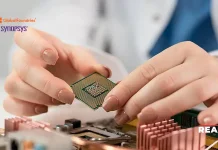NODAR, the leading provider of advanced in stereo vision technology for autonomous vehicles (AVs), announced a new automated parking system that uses vehicle cameras to provide high-density 3D data around the car for use in automated parking applications. The distinctiveness of this solution lies in its ability to combine different independently mounted stereo pairs of cameras around the vehicle to generate high-resolution 3D point clouds. The resulting realtime 3D data is used by the automated parking system to perform precise path planning and vehicle guidance.
Recent testing conducted with a leading OEM confirmed NODAR’s Hammerhead™ advanced stereo vision solution is able to provide 360˚ 3D data that is more precise, longer range, and more reliable than ultrasonic sensors produce. The NODAR system is able to detect nearby objects – as close as 0.6m and as small as 1 cm – while also delivering accurate 3D data as far away as 12 m. NODAR’s solution demonstrated an ability to handle complex parking scenarios, such as perpendicular parking spots, and to reliably detect small objects such as parking stops.
Most automated parking systems rely on ultrasonic sensors positioned around the car – sometimes up to 12 sensors – to understand the physical environment around the vehicle. Ultrasonic sensors, while relatively cheap, produce inconsistent results for a variety of reasons. Sensitive to weather and temperature, and limited by field-of-view, range, and speed, Ultrasonic sensors often paint an inaccurate and incomplete picture of the surroundings. The result is halted parking attempts, retries and driver frustration with the parking system.
Also Read: Lattice Introduces Advanced 3D Sensor Fusion Reference Design for Autonomous Applications
Another factor OEMs seriously consider is the aesthetics of ultrasonic sensors. As “dimples” on the surface of the vehicle, ultrasonic sensors attract the eye, disrupt airflow, and collect and drip dirt in inclement weather.
To provide OEMs with a more aesthetic and reliable automated parking system, NODAR created a patent-pending, computer vision-based automated parking system for all types of parking spots. Key advantages of NODAR’s system include:
- Range and Accuracy: Offers a range of up to 12 meters and detects objects as close as 0.6 meters while maintaining sub-1cm error within 10 meters.
- Mapping and Detection: Overlays 2D camera images with detailed 3D pointcloud data that detects parking spots, cars, curbs, narrow poles, and painted lines.
- Highly Reliable Data: Reconstructs ground surfaces perfectly, detecting objects as close as 60 cm, moving objects, and remaining unaffected by temperature, humidity, or environmental noise.
- Multiple Views: 360˚ bird’s-eye and surround views offer the automated parking system comprehensive, reliable data with which to safely route the vehicle into a spot.
- Accurate Parking Spot Detection: Regardless of the type of parking spot or whether there are surrounding physical structures, the NODAR system is able to identify valid spots and navigate safely.
- Faster Parking: With instantaneous realtime 3D data being generated many times a second, the NODAR system enables must faster automated parking than older systems, saving drivers time and increasing the usefulness of the system.
“NODAR is advancing hands-free parking capabilities in L2+ vehicles by leveraging our state-of-the-art stereo vision technology to produce a more reliable automated parking solution,” says Leaf Jiang, Chief Executive Officer at NODAR. “Drivers want a fast and reliable automated parking system that makes all types of parking effortless and safe.”
SOURCE: Businesswire




